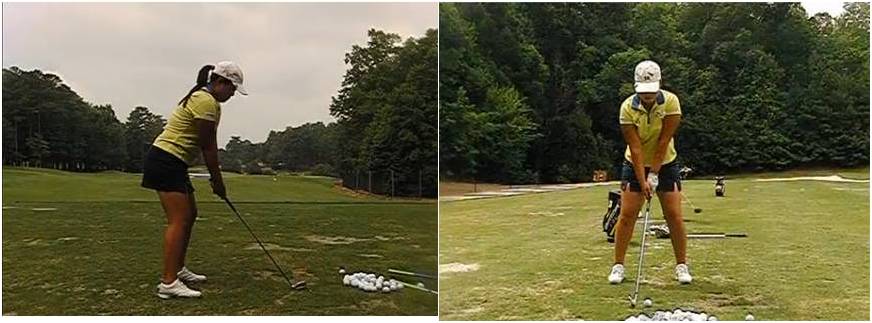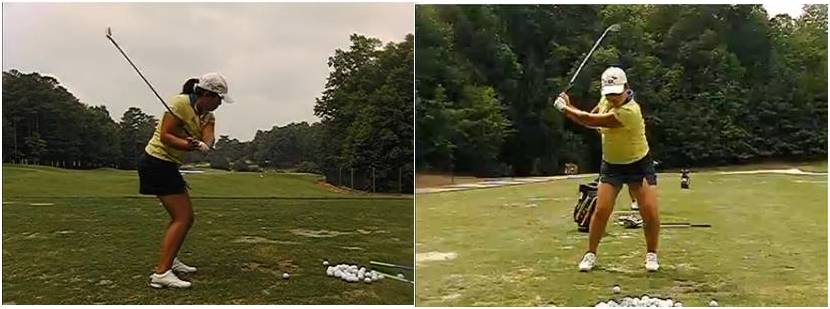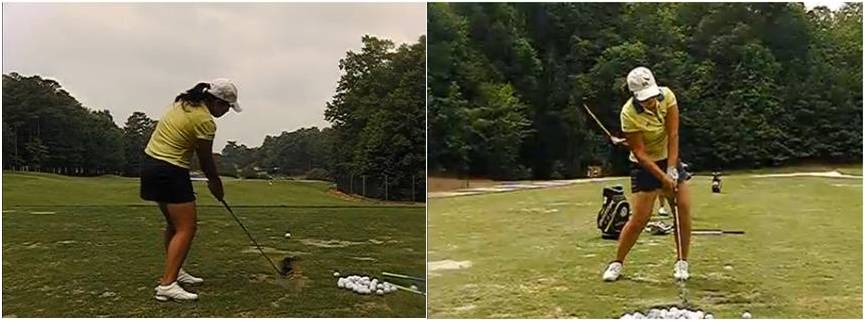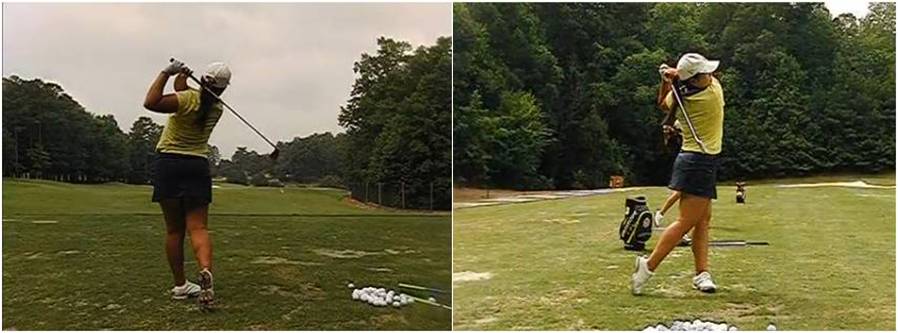Park In Bee 박인비 Swing Analysis – Mental Strengths
What can we learn from Park In Bee
In 2008, In Bee became a Rolex First-Time Winner when she became the youngest player to ever win the U.S. Women’s Open at the age of 19 years, proving her great potential. For a few years afterwards, even though she had some good finishes, she did not show the same kind of form as we thought she might; however, early last year she came back stronger than ever and is now clearly the most dominate player in the world and almost unbeatable. So what is it that makes In Bee tick?? What can we learn from In Bee?
Her Demeanor
I do not know In Bee personally, but what impresses me most is her emotional control on the golf course.
In just about every round of golf you play, you will at one time or another react to the result of one of your shots. A high percentage of times, when you experience these reactions, it will be in a negative form after an unsatisfactory shot. These reactions can be on a variety of emotional levels, which will have an immediate impact on the state of mind, as well as state of physiology that you will experience over the following 5-10 minutes.
Good shot or bad, In Bee stays in control of her emotions throughout the round, and does not dwell on the negatives. If you look closely at In Bee, you will notice that she has a great ability to be able to show NO reaction to shots. No matter how severe the result is, you very rarely see her react, which helps her greatly in being able to stay calm and free from negative emotional states over the following few holes.
I perceive this to be one of the biggest factors in players getting on the bogey train during a round, as they hit one poor shot, react to it and then find it difficult to recover before their next shot. If you can learn one thing from In Bee to help lower your scores, it is to focus on what I call “Not Reacting To Stimuli”.
Stimuli are the large number of internal and external factors that triggers us to react in a negative way. Stimuli such as:
- Bad Lie
- Bad Bounce
- Missed Putt
- Poor Shot
- Playing Partners
- Course Conditions
- Weather Conditions
And the list goes on and on!
One of the important aspects in regards to staying in control of your emotions during the ups and downs of a round of golf is the “No Reaction” that In Bee shows.
Time is spent on the practice facilities; focusing on showing NO reaction at all to the result of a shot, as well as time spent playing holes showing NO reaction at all. The more time you can spend focusing on standing there after every shot, with no verbal or physical response, will help you maintain a more empowering emotional state during rounds and give you the best chance of staying off the dreaded Bogey Train!!
In Bee’s Swing
Address
In Bees calm demeanor is reflected in her address position. It is very relaxed with no tension in her hands, arms and shoulders. For me, this is one of the keys to her playing well under pressure. Her setup is balanced with her arms hanging comfortably on the side of her chest. It is a model address position and one most players could learn from. Try taking the tension out of your address, focus on the feeling in your shoulders, arms and hands and make sure they are tension free, ready to swing the club smoothly like In Bee.
Backswing
What I like most about In Bee’s backswing is the simplicity. She creates resistance with a very stable lower body. Her hips probably turning under 45 degrees, her shoulders turn against this, probably less 90 degrees and with this pivot she keeps her arms in a much shorter position that what many might think “normal”. This proves it is not how much you turn your body that matters it is the quality of the turn and that you do not need to have a long swing to create speed and distance. In Bee creates great speed from this position. You do not hit the ball in the backswing, and this is what you can learn from In Bee. Try simplifying your backswing by creating a smaller tighter pivot and keeping your arms short. There is much less to get wrong from this position, and it will help you create more consistency in your game. It is surely one of the reasons why In Bee is so consistent.
It is this move In Bee has to start her downswing which creates speed and distance. It is hard to see in pictures but the key to In Bee’s speed is her first move in the downswing. It has a great combination of moving her weight to her left foot and body rotation. I have often said that the first move in the downswing should be pushing your weight into your left foot (a downward force) and In Bee demonstrates this perfectly.
Perhaps at impact her body is more open to the target line that normal, with her head also rotated towards the target. I believe this is a key to her great play. With the body opening through impact, it makes it almost impossible for the clubface to close and miss left. This is what I want you to learn. By only missing one direction, this game becomes very easy. Perhaps you only miss right, meaning you can aim at the left side of the fairway with confidence. If the ball goes straight it will stay on the fairway. If you push it a little, it will be in the centre of the fairway; and even if it is quite a big miss to the right, it still has a chance to finish on the right side of the fairway. Players who miss left and right have no idea where to aim, and as a result have very little confidence. I do not think it is luck that In Bee’s impact looks very similar to Anikia Sorenstam and David Duval, 2 very dominate players in their time. Practice creating one shape of shot to increase your own confidence.
She has a model follow through with a nice straight spine angle, which will help her body stay healthy for a long time. A follow through which we could all learn from!
This is something you cannot see in pictures, but In Bee has great tempo. She moves the club at the start of the swing with a smooth acceleration. She then has a short pause at the top of her swing and then once again accelerating the club to max speed at impact. This tempo is again a key to her consistent play, and by just watching her swing and copying her tempo, it can only help you gain more consistency in your own play. Her tempo is also linked to her demeanor, which I talked about before; keeping control of your emotions will in turn help your tempo.




